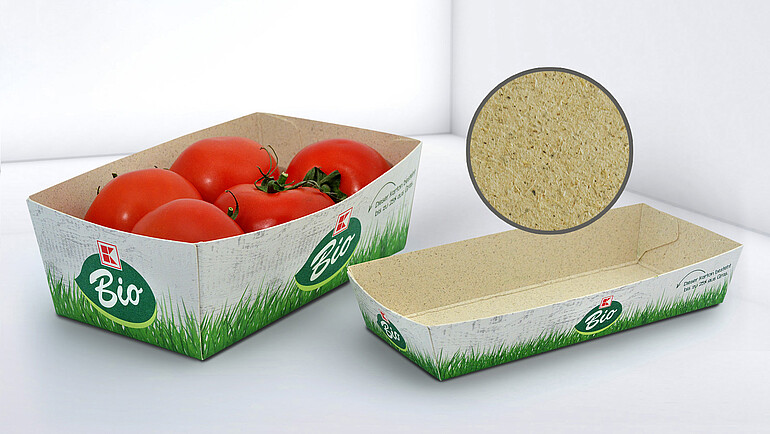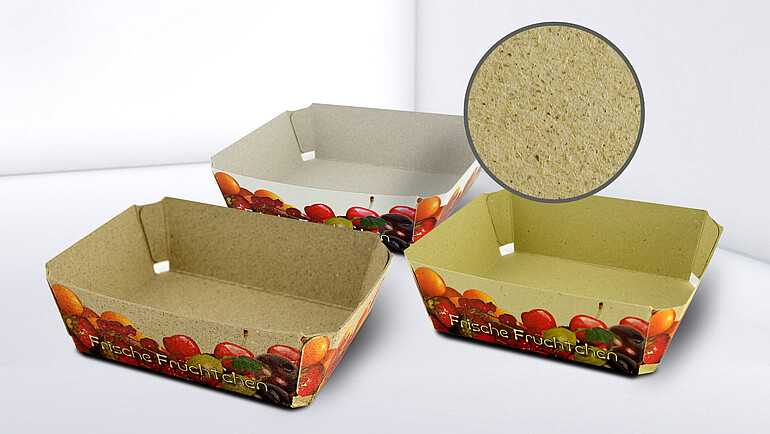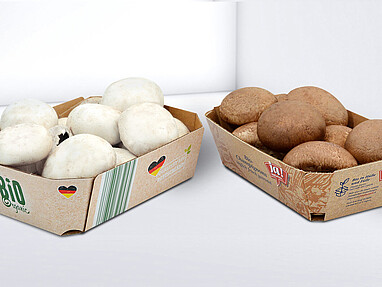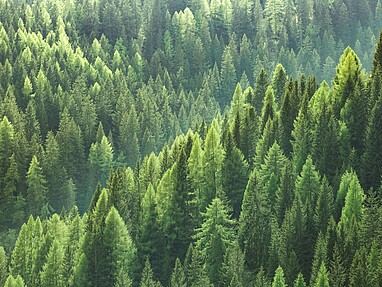Packaging design for recycling
A growing number of consumers are opting for it, the EU Commission is calling for it by 2030, and more and more companies and brand manufacturers are also pursuing it: packaging that protects the product without harming the environment. Elaborate throw-away packaging, which often contains various plastics, is “out” and runs the risk of products becoming slow sellers. It can even be a reason for consumers to not pick up a product in the first place and to choose an item with sustainable packaging instead. Packaging is now increasingly being recognised as a waste concern, meaning that its acceptance depends on whether it has been designed with sustainability in mind. This applies to everything from shrink-wrapped cucumbers to blister packaging for toothbrushes and beyond.
The sustainability megatrend: when obligation becomes a must-have
Packaging solutions made from recyclable cardboard are therefore more popular than they have ever been. But it’s worth taking a closer look at supposedly environmentally friendly, i.e. recyclable, materials such as cardboard, paper and paperboard. And that is something we have always done here at Karl Knauer. Environmental protection and sustainability have always been close to our hearts, long before they became a megatrend. They are an integral part of our corporate strategy. And because of this, we want to take a moment to briefly explain where the small, subtle differences lie that determine how sustainable a piece of packaging actually is.
Packaging recyclability
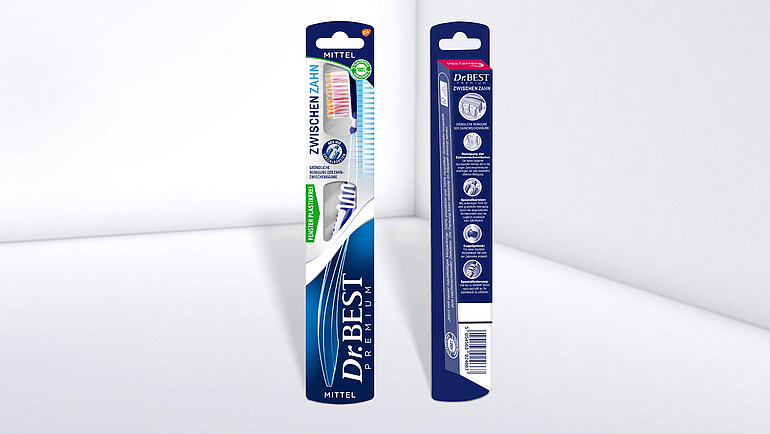
We have all been there: trying, with varying degrees of success, to remove stubborn plastic film from a cardboard box so that you can then dutifully dispose of it in your recycling bin. Apart from it being tedious, this sort of difficulty is the main reason why we still have a lot of room for improvement when it comes to recycling and waste separation in Germany. Yet there are some very simple solutions out there. The best approach is to use just a single material to create exceptionally eco-friendly mono material packaging. But a combination of materials can still be sustainable. An example of this is the sophisticated plastic-free packaging we developed for Dr. Best toothbrushes. This packaging, including a patched window, is made from renewable natural materials such as cardboard and cellulose fibres, which can be fed back into the recycling cycle via waste paper disposal.
Environmentally conscious: eco-friendly materials
Packaging that consists of just one, single-variety material is particularly easy to recycle. Cardboard that contains elements like grass or silphium has dark spots which influence the visual quality of the packaging. For the packaging relaunch of brand manufacturer Mey, the focus needed to be on the right choice of material, and attention was also paid to the use of a significantly reduced, selective print design and a dispersion-based varnish. This keeps both environmentally conscious consumers and recycling services happy.
Custom selection of materials
Plastic – only if it can’t be avoided
It may be necessary for legal, hygienic or even technical reasons that goods do not come into direct contact with cardboard packaging. The first step is to check whether it is possible to use varnish as a barrier. Only if this proves insufficient does it become necessary to consider the use of recyclable films or plastics, and preferably as sparingly as possible. In such cases, intelligent packaging designs can ensure that the different components detach themselves from each other when opened or that they can be separated in a self-explanatory and easy way.
Think circular from the start
Developing truly sustainable solutions means reducing everything that isn’t absolutely essential: energy, auxiliary materials like glue and varnishes, transport routes and unnecessary corrective cycles. But this requires having knowledge about the wasteful use of resources. And that’s something that we have plenty of here at Karl Knauer!
![[Translate to Englisch:] Verpackung Mey Close Up](/fileadmin/_processed_/1/e/csm_Mey_CloseUp_Logo_86ce8990ac.jpg)
